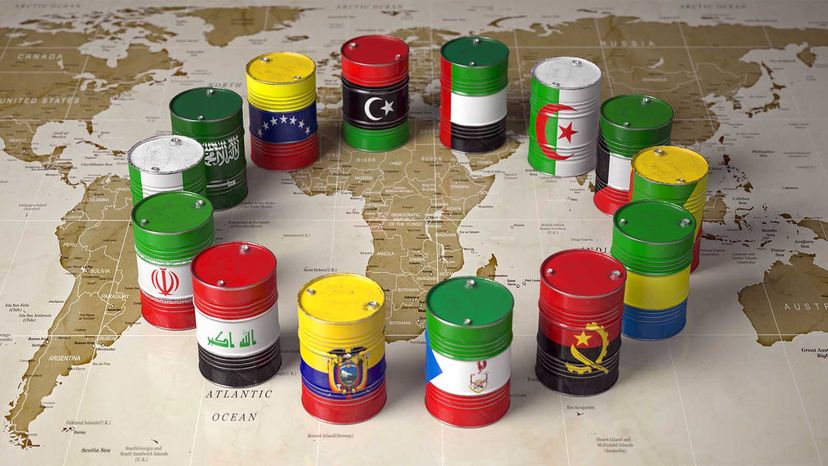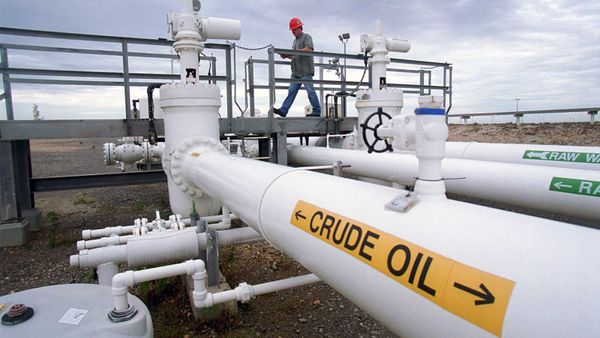
Doomsday scenarios — "What will we do when we run out of oil?" — are nothing new. For decades, analysts and industry experts have been trying to predict when the world's oil supply will be critically low — or dry up altogether — and what the results might be.
The United States has been investing in renewable energy to help reduce its dependence on petroleum-based fuels, and thus, the amount of oil it imports. In fact, in 2019 alone, the U.S. invested $59 billion; compare that to just $6 billion in 2004.
Advertisement
But is weaning off oil even possible? Let's consider the factors involved in this multipronged question.
Currently, the United States is largest oil producer in the world, followed by Saudi Arabia, Russia and Canada. (Oil here includes crude oil and all other petroleum liquids and biofuels.) As of March 8, 2022, the U.S. Energy Information Administration's (EIA) preliminary data for 2021 suggests the U.S. had a total petroleum production output of about 16.6 million barrels per day. But the U.S. consumed about 19.8 million barrels per day in 2021. That's a difference of -3.2 million barrels per day.
The U.S. exports oil as well. In 2021, the United States exported about 8.6 million barrels a day of petroleum to about 176 countries and four U.S. territories. And there are imports of petroleum to the U.S., too. In 2021, that number was about 8.4 million barrels per day. That's a difference of about -0.16 million barrels a day 2021.
What that means is in 2021, for the second year in a row since 1949, the United States was a net petroleum exporter, or in layman's terms the country exported more than it imported.
The first year was in 2020, when the U.S. exported about 8.5 million barrels a day and imported about 7.9 million barrels a day. Also in 2020, the United States produced about 18.4 million barrels per day and consumed about 18.1 barrels per day.
Even still, the U.S. imported petroleum from other countries in 2020 (and 2021). The imports were, according to EIA, "to help to supply domestic demand." Currently the United States' top five sources for petroleum are Canada, Mexico, Russia, Saudi Arabia and Colombia.
The U.S. also maintains a valuable stockpile of crude oil in its Strategic Petroleum Reserve, though there are strict rules on when that oil can be drawn down.
But some experts say importing some foreign oil isn't necessarily a bad thing, even for net-exporting countries like the U.S.
Keisuke Sadamori, IEA's director for energy markets and security, testified during a Senate hearing in 2019, saying "even for net-exporting countries, imports can still play a critical role, helping overcome issues related to crude qualities, differences in refined product demand and domestic refining capacities, or geographical mismatches between production and consumption."
So again, the real question that needs answering is how long can the global supply of crude oil, liquid hydrocarbons and biofuels last? The United States certainly isn't as reliant on other countries for crude oil as it was even 15 years ago when it was producing about 5,000 barrels a day.
The EIA says one often-cited, but misleading, way to gauge the future of oil reserves is the reserves-to-production ratio. That method is calculated by dividing the volume of total proved reserves by the volume of current annual consumption. But the EIA says because proved reserves are based on known projects, they're not applicable for estimating total resource availability over the long term. Instead, it says, global oil reserves should increase as new technologies come online at existing oil fields. And of course, there will be competition from renewable energy in the future to consider, too.
The U.S. Energy Information Administration explains its view of the future in its Annual Energy Outlook (AEO) 2021, which is an annual assessment of the world energy market. Key points for the United States, which were released March 3, 2022, include:
- Petroleum and natural gas remain the most-consumed sources of energy in the United States through 2050, but renewable energy is the fastest growing.
- Wind and solar incentives, along with falling technology costs, support robust competition with natural gas for electricity generation, while the shares of coal and nuclear power decrease in the U.S. electricity mix.
- U.S. crude oil production reaches record highs, while natural gas production is increasingly driven by natural gas exports.
The report also expects the United States to remain a net exporter of total liquids and a net importer of crude oil.
But to cut dependence on foreign oil altogether, the United States — and the world — must cut its addiction to oil entirely. And we are still a long way from that reality.
Advertisement


